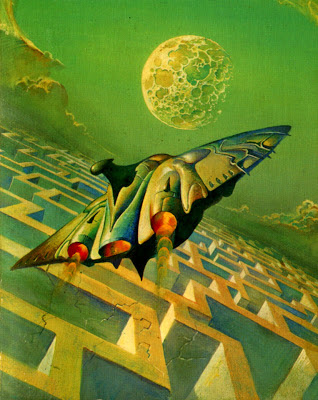The gnomes are a member species of the Alliance. They hail from ancient subterranean habitats on Dzrrn, a large asteroid. They've colonized more asteroids in their own system and in others.
Appearance and Biology: Gnomes are small (1.-1.3 m) humanoids with loose, wrinkled skin and large ears. Most gnomes encountered will likely be male, but there is little sexual dimorphism. Gnome clans are seldom made up of more than 100 individuals, though they tend to have close ties with nearby clans. Only few individuals in a clan are capable of breeding at a time, though a female may breed with multiple males. Mating produces an organism the gnomes call a”mother”--essentially an external womb. The mother generates gnome embryos from the genetic material donated from its maternal gnome and all the males she mated with. The female coordinates the mother’s care, but all members of clan take part.
Gnomes have castes, as well. Most males (and a few females) are “workers” responsible for the care and maintenance of the habitat. The somewhat taller “managers” are disproportionately female, but still numerically mostly male. They have primary responsibility for the rearing of children, the protection of the clan, negotiation with outsiders, and strategic planning.
Psychology: Gnomes are gregarious and inquisitive, but deliberate in their thought process. They seldom act rashly. They observe less need for personal space than most humanoids, and in fact, are prone to depression if forced into situations where they can have little physical contact with others for extended perionds. Many gnomes suffer from a fear of open spaces, and may experience a panic reaction.
Stats: Gnomes have a Constitution of 9.





.jpg)













